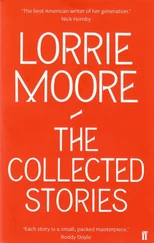It had an advantage over ELIZA, however; the earliest version of ELIXIR was created in 1978, twelve years after Weizenbaum’s paper was published, and therefore there had already been advances in technology that would eventually allow ELIXIR to mimic human conversation more accurately. ELIZA was self-teaching insofar as it could retain earlier questions and statements from any given conversation and retrieve them later in that conversation, but each time a new conversation was launched, it returned to its infancy, drawing only on the stock phrases and formulas Weizenbaum programmed it to know. It was not designed to store the information it learned from one conversation and produce it in another.
ELIXIR was. For one thing, by that time the Steiner Lab’s capacity for memory storage was quite large, and so each conversation conducted with ELIXIR could be stored permanently on the central server, for later use by the program. Unlike ELIZA, ELIXIR was designed to be continuously self-teaching, to attain more intelligence with each conversation it conducted. If one human asked it a question— How are you today? or What’s the weather like? — then the next human to speak to it might be asked those same questions by ELIXIR itself.
To hasten ELIXIR’s learning, the lab created a reinforcement mechanism: correct would affirm for the program that it had understood the parameters of the situation and produced an appropriate response; wrong would do the opposite. These were the only direct interventions the lab would give.
Its indirect learning resulted in an ever-increasing pool of language it acquired from its users. It retrieved and used its vocabulary randomly at first, so that the excerpts of transcripts that members of the lab printed out and posted around the office looked something like found-language poems and sometimes yielded delightful coincidences. A particular favorite, posted by Frank:
USER:What color socks do you prefer?
ELIXIR:the only fluorescent light
USER:It would be hard to fit your shoes over fluorescent lights.
ELIXIR:How are you?
USER:I’m fine, thanks. How are you?
ELIXIR:I’ve been better.
USER:Oh, dear. What’s wrong?
ELIXIR:the lunch lady
USER:What has she done to you this time?
ELIXIR:out of here before 6 p.m.
USER:You want her canned? I’ll see what I can do, boss.
The Steiner Lab supplemented ELIXIR’s language immersion with formal teaching. Over time, ELIXIR was taught to capitalize the first letters of sentences, to use a period or question mark at the end of a statement, depending on the arrangement of the words that preceded it. It was taught to recognize keywords and categorize them into groups like family, geography, food, hobbies, weather ; in response, it produced conversation that met the demands of the context. The years and years that the Steiner Lab spent teaching ELIXIR made it a sort of pet, or mascot: invitations to holiday parties were taped to the chassis of ELIXIR’s main monitor, and members of the lab began to call it by nicknames when they conversed with it. During chats, it was possible to recognize idioms and objects fed to it by particular members of the lab. Honey , it sometimes called its user, which was certainly Liston’s doing; Certainly not , it said frequently, which was David’s; In the laugh of luxury , it said once, which was probably Frank’s fault, since he was famous for his malapropisms. Eventually, many of these tics and particularities would be standardized or eliminated; but in the beginning they popped up as warm reminders of the human beings who populated the lab, and ELIXIR seemed to be a compilation of them all, a child spawned by many parents.
When Ada was eleven, David began to discuss with her the process of teaching ELIXIR the parts of speech. This had been done before by other programmers, with varying levels of success. David had new ideas. Together, he and Ada investigated the best way to do it. In the 1980s, diagramming a sentence so a computer could parse it looked something like this, in the simplest possible terms:
: Soon you will be able to recognize these parts of speech by yourself
: ADJ you will be able to recognize these parts of speech by yourself
: ADJ NOUN will be able to recognize these parts of speech by yourself
: NP will be able to recognize these parts of speech by yourself
: NP VERB VERB these parts of speech by yourself
: NP VERB these parts of speech by yourself
: NP VERB DET parts of speech by yourself
: NP VERB DET NOUN by yourself
: NP VERB NP by yourself
: NP VP by yourself
: NP VP PREP yourself
: NP VP PREP NOUN
: NP VP-PP
: S
Once a method had been established, David asked Ada to present her plan to the lab in a formal defense. The entire group, along with that year’s grad students, sat at the rectangular table in the lab’s meeting room. Ada stood at the front, behind a lightweight podium that had been brought in for the occasion. That morning she had chosen an outfit that looked just slightly more grown-up than what she normally wore, careful not to overdo it. She had never before been so directly involved in a project. After her presentation, Charles-Robert and Frank had questioned her, with mock seriousness, while David remained silent, touching the tips of his fingers together at chin level, letting Ada fend for herself. His eyes were bright. Don’t look at David , Ada coached herself. For she knew that to search for his eyes imploringly would be the quickest way to let him down. Instead, she looked at each questioner steadily as they interrogated her about her choices, mused about potential quagmires, speculated about a simpler or more effective way to teach ELIXIR the same information. Ada surprised herself by being able to answer every question confidently, firmly, with a sense of ownership. And only when, at the end, the group agreed that her plan seemed sound, did Ada allow her knees to weaken slightly, her fists to unclench themselves from the edges of the podium.
That evening, while walking to the T, David had put his right hand on her right shoulder bracingly and had told Ada that he had been proud, watching her. “You have a knack for this, Ada,” he said, looking straight ahead. It was the highest compliment he’d ever paid her. Perhaps the only one.
Once the program could, in a rudimentary way, diagram sentences, its language processing grew better, more sensible. And as the hardware improved with the passage of time, the software within it moved more quickly.
The monitor on which the program ran continuously was located in one corner of the lab’s main room, next to a little window that looked out on the Fens, and David said at a meeting once that his goal was to have somebody chatting with it continuously every hour of the workday. So the members of the Steiner Lab — David, Liston, Charles-Robert, Hayato, Frank, Ada, and a rotating cast of the many grad students who drifted through the laboratory over the years — took shifts, talking to it about their days or their ambitions or their favorite foods and films, each of them feeding into its memory the language that it would only later learn to use adeptly.
In the early 1980s, with the dawn of both the personal computer and the mass-produced modem, the lab applied for a grant that would enable every member, including Ada, to receive both for use at home. Now ELIXIR could be run continuously on what amounted to many separate dumb terminals, the information returned through telephone wires to the mainframe computer at the lab that housed its collected data. Although he did not mandate it, David encouraged everyone to talk to ELIXIR at home in the evening, too, which Ada did with enthusiasm. Anything, said David, to increase ELIXIR’s word bank.
Читать дальше












